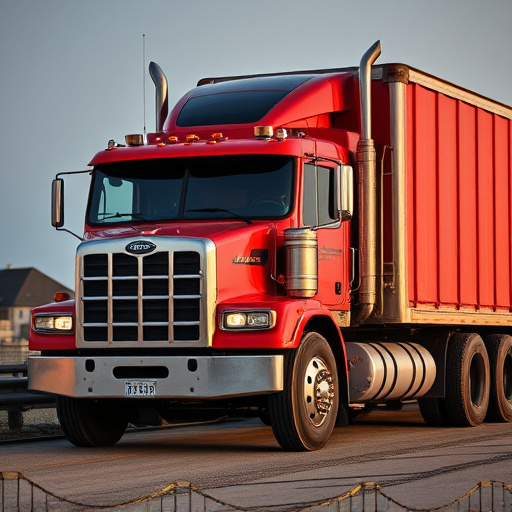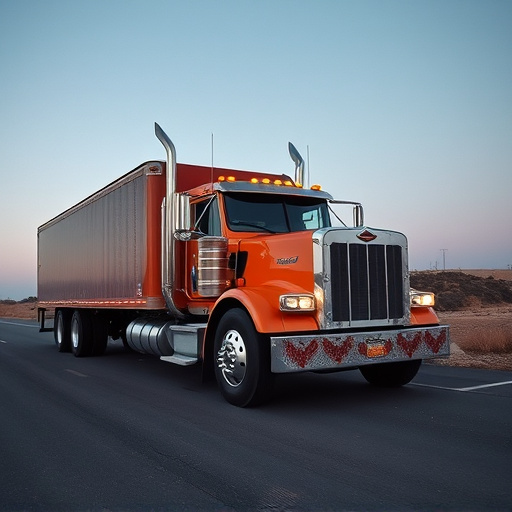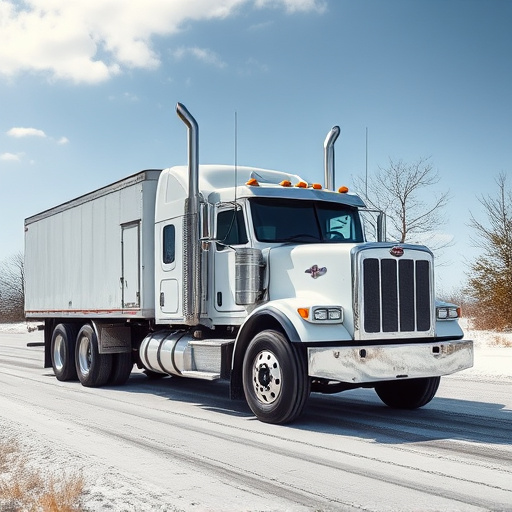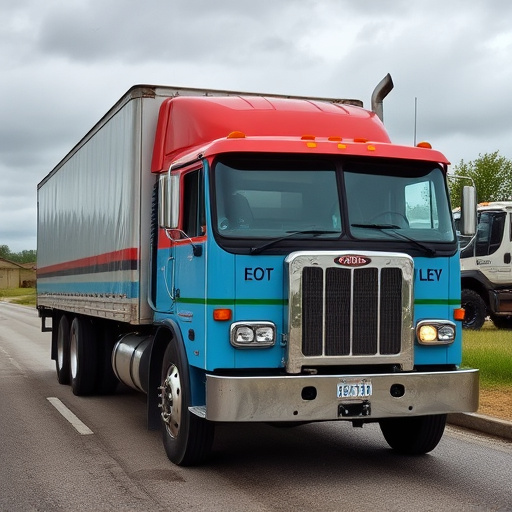Before jump-starting a truck battery, conduct a safety assessment, gather essential tools and gear, and park vehicles safely with batteries facing each other. Accurately identify positive and negative terminals, clean corrosion, and securely connect jumper cables between both batteries' terminals. Restart the truck engine for several minutes, then safely disconnect cables to recharge the battery and prolong its lifespan.
Stranded with a dead truck battery? Jumping-start it safely is crucial. This guide walks you through the process, from identifying battery issues and ensuring safety precautions to gathering the right tools and connecting jump cables correctly. Learn how to restart your engine and charge your battery effectively, keeping in mind essential tips for truck battery maintenance.
- Assess Battery Issues and Safety Precautions
- Gather Necessary Tools and Materials
- Identify Positive and Negative Terminals
- Connect Jump Cables Correctly
- Restart Engine and Charge Battery
Assess Battery Issues and Safety Precautions

Before attempting to jump-start a truck battery, it’s crucial to assess any potential issues and prioritize safety precautions. If you notice dim lights, difficulty starting the engine, or an obvious leak from the battery, these could be indicators of a faulty battery that requires professional attention. Always wear protective gear, including gloves and safety goggles, as batteries contain corrosive fluids and can pose a risk of electric shock. Ensure your vehicle is parked in a safe location away from flammable materials and other vehicles to prevent any accidents during the jump-starting process. Additionally, make sure both trucks are off and the keys are removed from the ignition to avoid short circuits.
Gather Necessary Tools and Materials

Before you begin jump-starting a truck battery, ensure you have all the necessary tools and materials on hand. This typically includes a set of jumper cables, another fully charged vehicle with a compatible battery, and safety gloves and glasses for protection. It’s crucial to use these specific items as incompatible batteries or incorrect cable connections can lead to electrical hazards.
Additionally, park both vehicles close together, ensuring their batteries are facing each other. Make sure all electrical systems in both cars are turned off to prevent any unexpected short circuits. With the right tools and a safe environment, you’ll be better equipped to successfully jump-start your truck battery and get back on the road.
Identify Positive and Negative Terminals

When jump-starting a truck battery, the first step is to identify the positive and negative terminals correctly. This is crucial for safety and effectiveness. The positive terminal, usually marked with a ‘+’ sign or red color, is connected to the high voltage side of the battery. It’s essential to connect your jumper cables here, but be careful not to mix up the connections as it could cause damage or even an explosion.
The negative terminal, often denoted by a ‘-‘ sign or black color, serves as the low-voltage side of the battery. This is where you’ll attach the other end of your jumper cables. Always ensure these terminals are clean and free from corrosion for optimal connection. Remember, proper terminal identification prevents short circuits and keeps you safe while jump-starting your truck battery.
Connect Jump Cables Correctly

To ensure safety and effectiveness, correctly connecting jump cables is paramount. First, position your trucks so their batteries are close to each other. Next, clean the battery terminals with a wire brush to eliminate corrosion, which can cause intermittent connections. With the engines off, connect one end of a red jump cable to the positive (+) terminal of the dead truck battery. Then, attach the other end to the positive terminal of the good battery. Repeat this process for the black cable, connecting it between the negative (-) terminals of both batteries. Ensure no bare metal is exposed and all connections are secure.
Restart Engine and Charge Battery

After successfully connecting the jumper cables, it’s time to restart your truck’s engine. Once the engine is running smoothly on its own power, keep it idling for several minutes. This period allows the alternator to charge the battery and restore its power level.
With the engine running, you can now disconnect the jumper cables in a safe manner. Start by removing the red cable from the positive terminal of the charged battery, followed by the black cable from the negative terminal. Ensure that no metal parts are touching to prevent any short circuits as you do this. This step is crucial for maintaining the charge and extending the lifespan of your truck battery.
Jump-starting a truck battery is a handy skill to have, especially if you find yourself with a dead battery on the side of the road. By following these simple steps—from assessing battery issues and prioritizing safety to gathering the right tools, correctly identifying terminals, and safely restarting your engine—you can get back on the road in no time. Don’t forget to charge your battery afterward to prevent future failures and keep your truck’s electrical system running smoothly.
